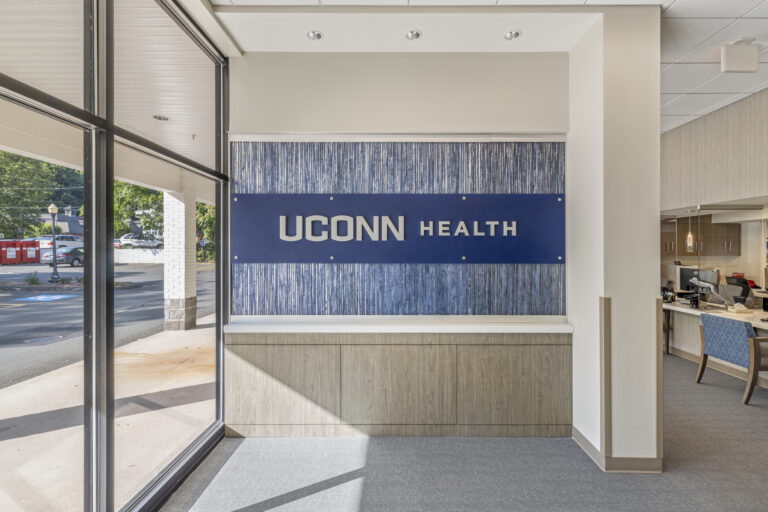Challenges and Considerations in Outpatient Healthcare Development

In the late 20th century, a significant shift occurred in healthcare as providers moved clinical functions away from traditional inpatient hospital settings. Driven by reimbursement rates and the need for improved patient access and convenience, medical services such as imaging, urgent care, and other specialties began seeking alternative real estate options. Faced with a shortage of new construction sites, especially in dense markets like New England, the Building Resuscitation movement emerged, advocating for the adaptive reuse of old buildings to meet healthcare needs.
Today, the trend continues, with outpatient facilities and medical office buildings (MOBs) still on the rise. Healthcare providers are continuously seeking innovative ways to expand their services, offering higher acuity care outside hospital settings and adapting to patient preferences for more accessible care.
At Bisnow’s recent Investments and Developments in Healthcare: Outpatient Facilities And Medical Office Buildings panel, industry experts gathered to explore the latest trends and challenges in developing and investing in outpatient healthcare facilities and MOBs. The conversation focused on how design and development can meet the complex demands of modern healthcare while improving patient experience.
Moderating the discussion was Ron Goodin (pictured right), ASHE, LEED AP BD+C, National Healthcare Market Leader at Colliers Engineering & Design, based in our Connecticut office. With over 35 years of experience in healthcare architecture and planning, including roles in hospital network facility planning, management, and construction, Ron is an expert in navigating the complexities of outpatient healthcare development. He and the panel shared insights into how strategic design and adaptive reuse can overcome obstacles like limited site availability, regulatory requirements, and budget constraints while fostering a more efficient, patient-centered approach to care.
Read on for an overview of the discussion and Ron’s expert take on how healthcare providers are navigating new trends and challenges.
Higher Acuity Care in Outpatient Settings
Beyond the physical space, the level of care provided in outpatient facilities and MOBs is becoming more complex. Once limited to hospital settings, complex medical procedures are now being performed in outpatient centers thanks to advances in technology, surgical techniques, and patient care monitoring. As a result, MOBs are now often referred to as
“Medical Outpatient Buildings,” reflecting their expanded capabilities, including surgeries and high-end orthopedic procedures. While this shift enhances patient convenience and reduces costs, it also introduces new facility requirements. These include advanced imaging technologies, enhanced infection control measures, specialized staffing and spaces, integrated patient monitoring systems, and flexible layouts that can adapt to evolving medical needs.
Advancements in Technology
Another trend in healthcare is the rise of telehealth, which enables providers to offer consultations, follow-up care, and specific diagnostic services remotely, making healthcare more accessible. New technologies such as AI-assisted diagnostics, remote patient monitoring, and robotics are revolutionizing care delivery along with telehealth.
While virtual healthcare has enhanced accessibility, it has not eliminated the need for physical spaces. Instead, MOBs are evolving to support hybrid care models that seamlessly blend digital health solutions with in-person visits. For example, while many patients have returned to brick-and-mortar facilities post-COVID, behavioral health continues to rely on the telehealth model. Developers and healthcare organizations must design flexible, future-proof facilities that can adapt to both current and emerging needs.
Choosing the Right Building
When selecting a building for healthcare use, three primary factors must be considered to ensure it is suitable for healthcare functions:
- Location: Healthcare facilities typically need to be within 10 to 15 miles of a hospital or its network’s primary service area.
- Functionality: Ideal buildings feature large open spaces with high ceilings, making them suitable for outpatient surgical centers or imaging facilities. Additionally, ensuring that the existing infrastructure, such as electricity and HVAC systems, can support medical needs is essential to avoid unexpected costs and complications.
- Parking: Ample parking space is vital to meeting the required ratios for patient and staff access, ensuring that the building can accommodate the volume of visitors expected in a healthcare setting.
Repurposing existing buildings for healthcare use can also offer advantages, such as speed to market, capital cost savings, and environmental benefits. However, there are challenges to consider, such as missing essential building features or difficulties in meeting HVAC requirements. Strategic design and careful selection of the right building can help mitigate these challenges, making adaptive reuse a viable and effective solution for modern healthcare facilities.
Balancing Investment and Innovation
Despite the challenges, the long-term outlook for outpatient care remains strong. With an aging population and a growing need for chronic disease management, the demand for accessible, high-quality outpatient services will only increase. However, rising construction costs, inflation, and changing reimbursement structures mean that healthcare developers must take a strategic approach to investment and design. Sustainability also plays a more significant role, with innovative building technologies and energy-efficient designs becoming key factors in long-term success.

Looking Ahead
Ron and other panelists at Bisnow’s recent event offered valuable takeaways on how outpatient healthcare and MOB development is evolving – and what’s next.
To learn more about Ron’s, read Bisnow’s article, “‘Best Locations To Deliver Care’: Ron Goodin of Colliers Engineering & Design To Talk Healthcare Trends at Bisnow’s May 14 Boston Event.”
